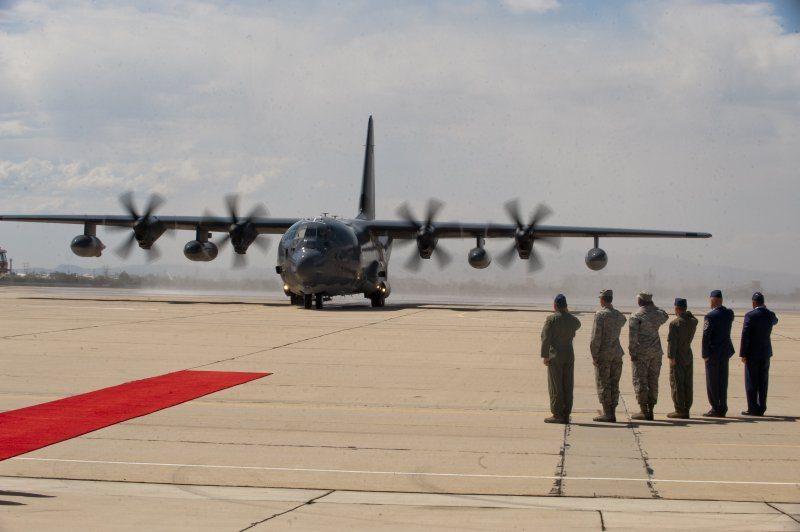Air Combat Command officials received its first HC-130J Combat King II after Air Force Chief of Staff Gen. Norton Schwartz flew the aircraft here and officiated an arrival ceremony Sept. 24.
The delivery of the new C-130 model from Georgia was significant for the personnel recovery mission, as the predecessor HC-130P/N King begins to be replaced with the newer HC-130Js.
“It is an honor to have flown such a magnificent aircraft,” Schwartz said during the ceremony. “This is such a significant milestone for the personnel recovery community. The capabilities of the new HC-130J are a magnitude greater than any of its predecessors.”
The previous C-130 models were originally built in the 1960s, but age and flight time have caught up with the airframes, said Lt. Col. Jason Hanover, the 563rd Rescue Group commander.
“This new aircraft is replacing an aging fleet and will give us so much more capability,” Hanover said. “It’s still called a C-130, but this is such a radically different aircraft. We will always execute our rescue mission, but this will allow us to facilitate other needs across the force.”
The Combat King II has a long list of modifications that will increase its mission effectiveness, including improved navigation, threat detection and countermeasure systems, Hanover said.
Before the newly arrived HC-130J can begin flying missions, it will be flown by the testing squadron here. Air Force officials expect HC-130Js to begin regular duty at the base in early 2013.
In the meantime, members of the 79th Rescue Squadron here will complete the training needed to fly and operate the new model.
“Right now, the 79th RQS is on their last major deployment with the older model of the C-130 and will be set to begin sending their people to the new J-model courses,” Hanover said. “The eight months of training needed to operate this aircraft really show all the improvements that have been made.”
The new aircraft will be a welcome addition to the Air Force’s rescue community, which is second to none in training, dedication and results, Schwartz said.
“It’s a result of all this that Soldiers, Sailors, Airmen, Marines and Coastguardsmen who serve in harm’s way have that extra measure of confidence,” Schwartz said. “They know that in times of danger or extreme duress, they can count on the fact that you will be there, or you will die trying.”










